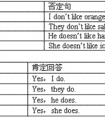用所给动词的适当形式填空1. I prefer_____(stay) at home to _____(go) out on Sunday.2. She asked me if I_____(go) to the park with her the next week.3. At the-九年级英语
(4)、重读闭音节结尾,末尾只有一个辅音字母,先双写该辅音字母,再加“ ed ”。
stop---stopped---stopped , drop---dropped--dropped
(5)、以ic结尾的动词,要把ic变成ick再加ed,
picnic→picnicked ,traffic→trafficked
2 、不规则动词:见不规则动词表
分词用法:
1、分词作状语
分词在句子中作状语,可以表示时间、条件、原因、结果、让步、伴随等。
分词(短语)作状语时,其逻辑主语应与句中主语相一致。
当现在分词表示的动作发 生在谓语动词之前时, 则用现在分词的完成式,且所表示动作与谓语动作同时发生, 则用现在分词的一般式。
完成或被动关系用过去分词。
①现在分词:
The students went out of the classroom, laughing and talking.
②过去分词:
Accompanied by his friend, he went to the railway station.
Given better attention, the plants could grow better.
2、“while ( when, once, until, if , though等连词)+分词”结构
现在分词或过去分词作状语时,有时可以在分词前加while,when, once, although, until, if等连词。
①现在分词:
When leaving the airport, she waved again and again to us.
While waiting for the train, I had a long talk with my sister about her work……
②过去分词:
Once recovered, he threw himself into his work and made every effort to do it well.
Although working very hard, he failed to pass the final exam. If translated word by word, the passage will be difficult to understand.
3、分词作定语
分词作定语时,单个的分词通常放在被修饰的名词之前,分词短语一般置于所修饰的中心词后面。
现在分词修饰的是发出该动作的名词(即与名词有主谓关系),过去分词修饰承受该动作的名词(即与名词是动宾关系)。
We will go on with our experiment as soon as we get the added fund.
This is really an exhausting day to all of us!
We can see the part of the moon lighted by sunlight.
After a night spent in excitement and sleeplessness, I forced myself to take a long walk along the beach the next day.
More and more developing countries established strategic partnership with developed countries
4、分词作宾语补足语
现在分词在see, watch, hear, observe, notice, feel, find, glimpse, glance等感官动词和look at, listen to等短语动词以及
have, keep, get, catch, leave, set, start, send等使役动词后面与名词或代词构成复合宾语,作宾语补语的成分。
例:I see him passing my house every day.
I caught him stealing things in that shop.
I smelt something burning.
5、分词作表语
分词作表语通常看作形容词来用。
过去分词表示主语的感受或状态,主语多为人。现在分词表示主语的性质,而且主语多为物;
①过去分词:
We were so bored that we couldn’t help yawning.
She felt confused, and even frightened.
②现在分词:
He was very amusing.
That book was rather boring.
很多动词的现在分词都可以作表语:
exciting, interesting, encouraging, disappointing, confusing, touching, puzzling.
考点名称:过去将来时
- 过去将来时:
表示从过去的某一时间来看将来要发生的动作或存在的状态。过去将来时常用于宾语从句和间接引语中。
去将来时的出发点是过去,即从过去某一时刻看以后要发生的动作或状态。 过去将来时表达法:
1. would+动词原形
例如:When you asked Li Lei for help, he would never refuse you.
2. was/were going to+动词原形
例如:He told ustaht he was going to attend the meeting.
3. was/were to+动词原形
例如:Li Lei was to arrive soon.
4. was/were about to+动词原形
例如:We were about to leave there when it began to rain heavily and suddenly.
5. was/were+现在分词
例如:He was leaving the next day.句型结构:
肯定句:主语+be(was,were)going to+动词原形~.
否定句:主语+be(was,were)not going to+动词原形~.
疑问句:Be(Was,Were)+主语+going to+动词原形~?
肯定句:主语+would(should)+动词原形~.
否定句:主语+would(should)not+动词原形~.
疑问句:Would(Should)+主语+动词原形~?
过去将来时的构成和一般将来时一样,只不过把助动词be变为过去式,把will,shall变为过去式。
例句:I didn''t know if he would come. =I didn''t know if he was going to come. 我不知道他是否会来。过去将来时具体用法:
一、would+不定式
1.用“would+不定式”表示过去将来时间通常带有表示过去将来的时间状语,而且多见于从属分句。
He said he would come back the next day.
2.如果要表示在过去将来某一时间正在进行得动作,可用“would+不定式进行体”。
例如:He never imagined that some day he would be living away from his motherland.
这种“would+不定式进行体”结构也可能仅仅表示一般过去过去将来时间,如同“will/shall+不定式进行体”表示一般将来时间一样。、
例如:He told me that Mary would be coming the next day.
如果要表示在过去将来某时以前业已发生得事态,可用“would+不定式完成体”。
例如:The delegation would have arrived by four o'clock that afternoon.
如果要表示从过去某时开始一直延续到过去将来某时得动作或事态,可用“would+不定式完成进行体”。
例如: She said that by the end of May she would have been studying medicine for three years
二、was/were going to +不定式
用做表示过去将来,也通常带有表示过去将来时间得状语。
例如: He said that he was going to live in the country when he retired.
用做表示的动作或事态,也可以是没有实现的意图。
例如:Last Sunday we were going to go for a picnic but it rained .
三、was/were to +不定式
用做表示过去将来,通常指按过去的计划安排将在某个过去将来时间发生得事态。
例如:They were not to get away with it if they continued to violate the law.
用作表示过去将来的安排,如果这个安排后来被取消了,没有实现,则用“was/were to +不定式完成体”表示,并可与表示现在、过去或将来得时间状语连用。 此外,其也可用作于表示以后不可避免得要发生得事件。
例如:They said goodbye,little knowing they were never to meet again.
四、was/were about to +不定式
用半助动词be about to 的过去时形式也可使其表示过去将来。这种结构通常指最近的过去将来事态,而且在一定语境中通常指未曾实现的意图:
例如:We were about to start when it began to rain .五、某些动词的过去进行时可表示过去将来时
come,go,leave,arrive,start等严格按照时间表发生的表起止的动词可用过去进行时代替过去将来时。
例1:He said the train was leaving at six the next morning.他说火车第二天早晨出发。
例2:She told me she was coming to see me.她告诉我她要来看我。六、特定场合的一般过去时可表示过去将来时
条件状语从句和时间状语从句中须用一般过去时代替过去将来时。
例1:I didn't know when she would come, but when she came I would let you know.我不知道她什么时候来,但她来了我会告诉你。
析:第一个when引导宾语从句,可使用将来时,第二个when引导时间状语从句,只能用一般过去时代替过去将来时。
例2:I didn't know if she would come,but if she came I would let you know.我不知道她是否来,但如果她来我会告诉你。
析:第一个if引导宾语从句,可使用将来时,第二个if引导条件状语从句,只能用一般过去时代替过去将来时。
- 最新内容
- 相关内容
- 网友推荐
- 图文推荐
| [家长教育] 孩子为什么会和父母感情疏离? (2019-07-14) |
| [教师分享] 给远方姐姐的一封信 (2018-11-07) |
| [教师分享] 伸缩门 (2018-11-07) |
| [教师分享] 回家乡 (2018-11-07) |
| [教师分享] 是风味也是人间 (2018-11-07) |
| [教师分享] 一句格言的启示 (2018-11-07) |
| [教师分享] 无规矩不成方圆 (2018-11-07) |
| [教师分享] 第十届全国教育名家论坛有感(二) (2018-11-07) |
| [教师分享] 贪玩的小狗 (2018-11-07) |
| [教师分享] 未命名文章 (2018-11-07) |

![Which of the following can you probably see in the meeting room? [ ]A. B. C.D. -七年级英语](http://www.00-edu.com/d/file/ks/4/2/dongmingci/2020-01-08/small97361980a56115e1c9237567439904fe1578422951.jpg)

![—Can the boy finish_____ the book in about a week? —I think he can. [ ]A. read B. reading C. to read D. reads -八年级英语](http://www.00-edu.com/d/file/ks/4/2/dongmingci/2020-01-08/smallfa4d713075e249356362fe7392193a301578421751.png)


